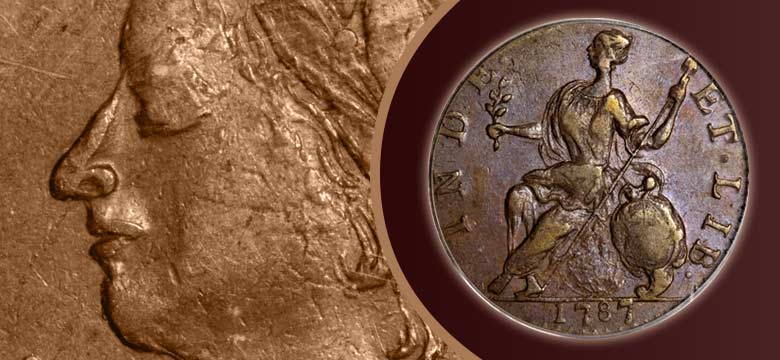Few coins have as much rustic historical appeal and offer such endless variety as the Connecticut Coppers of 1785 to 1788. These pieces circulated in early America as a medium of exchange used in colonial times, both before the US Mint was eventually established in the 1790s and even for several years thereafter.
Meant to be the size and general standard of an English halfpence, these coins were authorized by the General Assembly of Connecticut to be produced as a result of the lack of circulating coinage, although at the time they were only officially intended for making change. Without its own mint, the fledgling United States relied at the time on a ragtag variety of coinage and tokens from other countries such as England and Spain, making the need for additional small change an important concern so that commerce could easily take place.
After receiving approval to proceed in 1785, the four men who had proposed the new coinage to the General Assembly of Connecticut joined together with engraver Abel Buell and other investors to begin producing these coppers. The design was intended to imitate a British Halfpenny and included a portrait of King George II on the obverse. For the obverse side, two major design types were used of King George, either with a Draped Bust (portrait with draped fabric) or Mailed Bust (portrait with chain mail).
Beyond this simple design, however, these coins exhibit a wild degree of variety. Produced with many different dies in several disparate locations between 1785 and 1788, more than 350 die combinations have been identified by numismatic scholars over the years. Several of these varieties even have amusing nicknames given by numismatists. Among such varieties are the so-called “Laughing Head,” where King George appears to chortle, the “Horned Bust,” where an area of metal protrudes from the portrait, and various other quaint, fascinating, and sometimes even entertaining variants.
Given the force required to strike coins and the limited technology that was available at the time, the metal dies produced by Mr. Buell and others often became damaged or broken, requiring constant replacement. While a common hub for the dies allowed for much of the design to transfer from one new die to the next, much of the charm—and many of the entertaining varieties—of these coins result from the hand engraving that was required to enrich and strengthen the design details of each new die. This hand engraving, combined with changes in ownership in the group that produced the coppers and a variety of other challenges, led to the fascinating array of Connecticut Coppers which exist for study by collectors today.
Such pieces are a wonderful example of not only America’s economic history but also our early colonial history as well. With the Connecticut Coppers, both state legislatures and private citizens worked to meet the burgeoning new economy’s needs for day-to-day commerce. For more details on Connecticut coppers and other Colonial coinage, you can browse the Colonial Coin category at www.ha.com.
By Michael Weems
